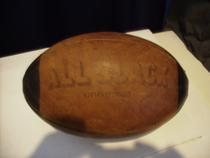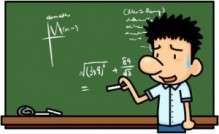Since the advent of professional rugby in 1995, the way the game is played has changed significantly. At the professional level the game bears little resemblance to that played in the amateur days. Even the way amateur rugby is played is significantly different.
When comparing game statistics from the two eras there are five major changes that stand out:
- the number of set pieces per game has decreased significantly;
- the ball is in play longer;
- the number of points scored per game has decreased;
- the number of breakdowns per game has increased significantly; and
- the number of phases teams take to score tries has increased.
The differences between the two eras are apparent in most aspects of the game including:
- Field Conditions – modern fields and stadiums with retractable roofs are less affected by poor weather, which allows for a much faster game.
 Equipment – the biggest change has been the ball. The old leather balls would get heavy and slippery when wet. The modern synthetic ball has enabled a big improvement in skills.
Equipment – the biggest change has been the ball. The old leather balls would get heavy and slippery when wet. The modern synthetic ball has enabled a big improvement in skills.- Laws – changes to laws and interpretations at the lineout, scrum and breakdown have made significant differences. Just think of the differences made by the advent of lifting in the lineout and requiring defences to start 5 metres back from the last feet at the scrum.
- Players’ Physical Profile – today’s players are generally taller, heavier, stronger and faster.
- Fitness – with players available to train more and refined training techniques, most players are much fitter than in the amateur days.
- Set Pieces – changes to the scrum engagement sequence and lineout lifting laws.
- Defence – the introduction of rugby league-style defence systems and the increased time available to players to practise this aspect of the game have had a significant impact on the way the game is played.
- Breakdown – despite changes to interpretations of various laws, the breakdown is probably the area in the game that most resembles the amateur era.
- Attack – the significant improvements in defence systems have made it much harder to make line breaks, particularly on first phase. Now, teams make more frequent use of multi-phase plays designed to break down defensive systems, and a lot more focus has been placed on attack from kicks and turnovers.
Let’s look at how these sorts of changes have impacted on the way the game is played by comparing some key statistics over the last 30 years.
The information I’ve summarised here comes from the IRB, which has published a range of statistics including:
- analyses of 16 international games between Six Nations and Tri Nations countries between 1982 and 1984, together with 16 corresponding games featuring the same countries between 2002 and 2004;
- detailed analyses of matches in the 2003, 2007 and 2011 Rugby World Cups;
- summary analysis of matches in the 1995 Rugby World Cup; and
- detailed analysis of all Six Nations and Tri Nations competitions since 2004.
See the source here.
In the 1991 RWC the ball was in play for only 24 minutes and 48 seconds per game. That time has increased Cup tournament, to 35 minutes and 25 seconds in 2011. In the 2011 Tri Nations the average time in play was 36 minutes and 22 seconds, and in the 2012 Six Nations the figure was 38 minutes and 12 seconds. The recently announced law trials include measures designed to further lift the ball-in-play time.
It’s interesting that the team with the most time in possession at the 2011 RWC won 59% of the pool matches, but once the tournament moved into the knockout stages only one of the eight matches was won by the team having the most time in possession.
The number of passes in a game has increased from around 150 per game in the 1980s to around 270 in 2012 – an increase of around 80%. (2011 Tri Nations — 292; 2012 Six Nations — 268.)
The number of breakdowns (rucks and mauls) has increased from around 50 per game in the 1980s to around 170 in 2012 — an increase of around 240%. (2011 Tri Nations — 167; 2012 Six Nations — 181.)
Ball retention at the breakdown has increased from 83% in the 1980s to around 94% in 2012.
The number of kicks in general play has decreased significantly, down from an average of around 75 per game in the 1980s to around 45 in 2012. In the 2007 RWC the average per game number was 56 (but there were 91 in the final). In the 2011 tournament the average number was 41 per game (47 in the final). The average in that tournament was the lowest in RWC history.
Another way to look at the level of passing and kicking in the game is comparing the ratio between passes and kicks. In the 1980s the ratio of passes to kicks in general play was about 2 to 1. It has been increasing steadily since then, and is now above 6 to 1.
Set Piece
The number of set pieces per game has decreased from over 80 per game in the 1980s to around 40 in 2012. The decrease has occurred fairly evenly across lineouts and scrums.
The other measure that has decreased in relation to the set piece is the percentage of tries scored from possession starting with a set piece. In the 1980s that was around 70%, but today it’s around 50%. In the 2011 Tri Nations the measure was 51%, but just 44% in the 2012 Six Nations.
While the overall percentage of tries scored from set piece has decreased, the percentage from lineouts has remained fairly constant at over 30%. It is the scrum that has decreased as a source of try-scoring possession – down from 34% in the 1980s to less than 20% today.
However, don’t let anyone tell you that set piece is no longer a vital part of the game. With 50% of try-scoring possessions created from lineouts and scrums, having a strong set piece is still the best way to build a winning platform — although the amount of time spent between lineout and scrum practice is probably changing.
Points Scored
With the substantial increases in the amount of time the ball is in play, the number of passes in the game and the decrease in the level of kicking, you might expect this attacking focus has increased the points scored. If so, you’d be surprised.
In the 1987 RWC the average number of points scored per game was 58. That fell to 42 in 1991 then increased to 54 in 1995, settling at 60 in 1999 and 59 in 2003. But since then the game has tightened up. In the 2007 RWC the average per game fell to 52 and fell further to 47 in the 2011 RWC, the lowest average outside 1991. In the 2011 Tri Nations the average points scored per game was 40 and in the 2012 Six Nations the average was just 36.
The number of tries scored per game has also been decreasing. In the 2003 RWC the average was 6.9 and that stat fell to 6.2 in 2007 and 5.5 in 2011. (2011 Tri Nations — 4.3; 2012 Six Nations — 3.1.)
It’s also taking teams longer to score tries. In the 2003 RWC 75% of all tries were scored within the first three phases, with 33% coming on the first phase. In 2007, while the three phases rate was still 75%, the first phase stat fell to 28%. In the 2011 RWC just 63% of all tries were scored within the first three phases and just 27% on the first phase. In the 2011 Tri Nations the numbers were 50% and 23%, and in the 2012 Six Nations they were a little higher at 63% and 35%.
Why are fewer tries and points being scored, and why is it taking longer to score those tries? It’s simple, really: the biggest change to the way the game is played in the professional era is the significant improvements made in defence.
I’ve said it before and I still believe that some of the magnificent attack we saw from the Wallabies in the amateur era from players like Mark Ella and David Campese would not produce tries today. In fact, despite the enjoyment I get every time I look back at the old footage, I believe that if the same attack patterns were used today the players would be smashed by a solid wall of defence bearing down on them. No doubt those great players would have found a different way to make an impact in attack, but the improvements in defence mean that comparisons between eras is probably not relevant.
Unfortunately I can’t give you any data on the changes in defence because the IRB doesn’t collect tackle data. Given that defence is such a major part of the game, I find that strange.
The Wallabies
Data on individual teams is not as readily available with the IRB only providing data for teams in the RWC since 2007, but it’s revealing to look at how the Wallabies compare to other countries recently.
The Wallabies have won around 88% of their own scrum feeds, which is close to the average of 89%. The Wallabies won 86% of their scrums at the 2011 RWC, compared to an average of 88%. At least we were well ahead of England at 81%, but the numbers for South Africa at 100%, New Zealand at 98% and Argentina at 97% don’t look too encouraging for us, particularly given our unimpressive scrummaging performance in the recent series against Wales.
The performance at the lineout is not as good. While the Wallabies’ average from 2007 onwards is similar to other countries at around 84%, in the 2007 RWC the Wallabies were towards the top of the tree with 92%. In the 2011 Tri Nations that level had fallen to 82% and in the RWC it fell further to 78% (the average for all teams in that tournament was 82%). Compare the Wallabies’ performance to the All Blacks’ at 92% and France’s at 90%, and then remind yourself that around 35% of all tries scored in the modern game start with possession from a lineout. It’s clear that serious attention is required for the Wallabies’ lineout. Just seven of the 19 other countries that competed at the 2011 RWC had a lower success rate than the Wallabies — but those seven included South Africa at 76% and Argentina at 75%.
With David Pocock on board you’d expect the Wallabies would be among the top-performing nations at the breakdown. In the 2011 Tri Nations the Wallabies retained 95% of their own ball at the breakdown, compared to the average for all three teams of 94%. With a 96% retention rate during the 2011 RWC pool matches compared to the average for all countries of 94%, the numbers looked good. However, once the Wallabies moved in to the knockout stages things got a whole lot tougher. In the quarter-final against South Africa the retention rate fell to 82% while the ‘Boks retained 87%. In the semi-final against New Zealand the retention rate was better at 91% but the All Blacks achieved 94%, and in the playoff against Wales we lost the count, 90% to 96%.
Most people have been critical of the Wallabies’ kicking strategy and/or execution over recent times. In the 2011 Tri Nations the Wallabies kicked in general play an average of 22 times per game, which was very slightly below the average for all three teams. In the 2011 RWC they kicked an average of 17 times per game, again below the all-teams average of nearly 21. In the quarter-final that number increased to 36 when South Africa kicked 30 times, in the semi-final to 27 when New Zealand kicked 32 times, and in the playoff to 26 when Wales kicked 30 times. It’s not the number of kicks by the Wallabies that should have us concerned, but the poor execution of those kicks — and unfortunately there is no data measuring effectiveness.
A summary of the data I extracted from the IRB reports can be found here.
What do the numbers tell you about the way the game is played these days, and where the Wallabies sit in comparison to other countries?



